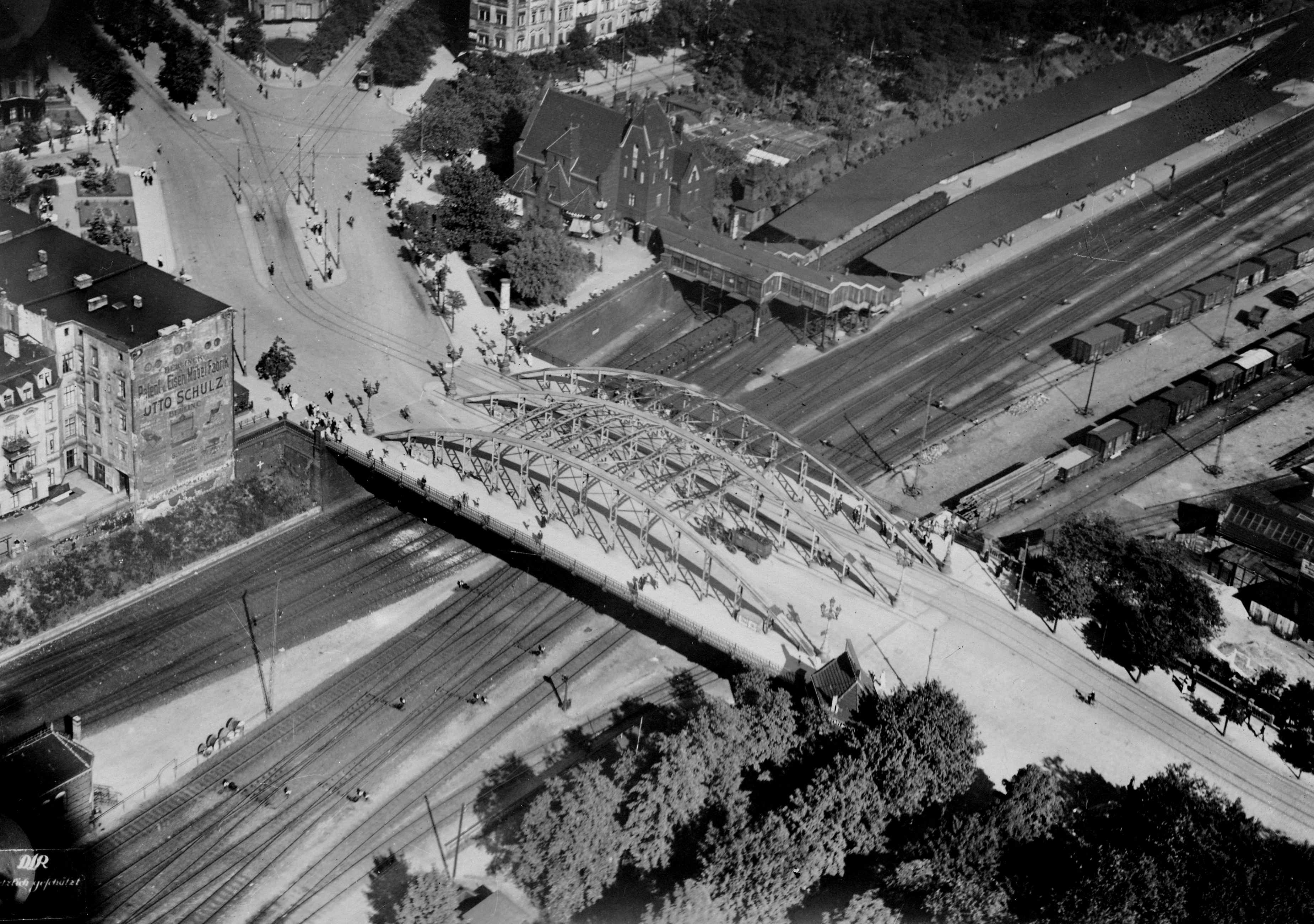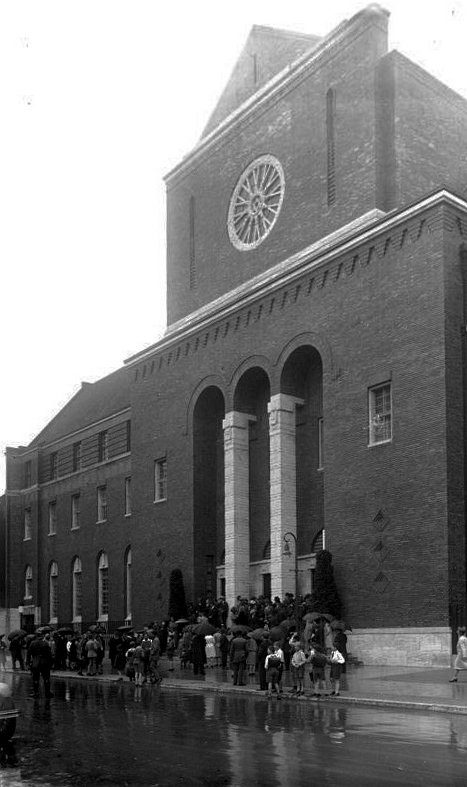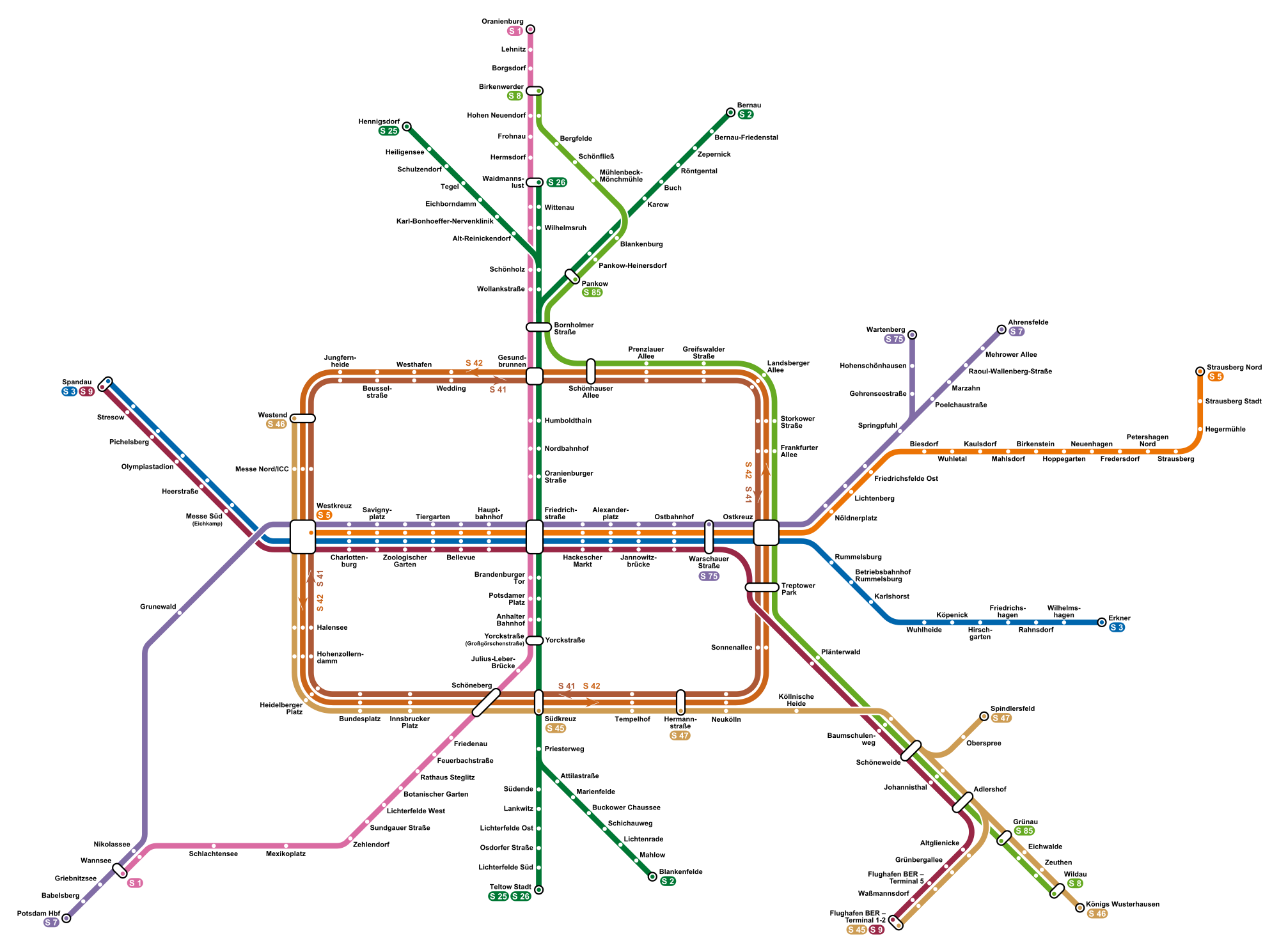|
Halensee
Halensee () is a ''locality'' (''Ortsteil'') of Berlin in the district (''Bezirk'') of Charlottenburg-Wilmersdorf. Halensee was established as a villa and tenement settlement in about 1880, in the suburb of Wilmersdorf, which became part of Greater Berlin in 1920. In 2004, Halensee became its own ''Ortsteil''. With an area of 1.27 km2 it is the smallest Ortsteil in Berlin after Hansaviertel. History Halensee was the site of the German shooting championship in 1921. On 26 September, one Jannich won the competition firing an Ortgies semi-automatic pistol. Geography The locality, the smallest of the Charlottenburg-Wilmersdorf district, is situated in its centre and borders with Charlottenburg, Wilmersdorf, Schmargendorf, Grunewald and Westend. It is bounded by the Bundesautobahn 100 ''(Stadtring)'' in the west and the ''Cicerostraße'', a branch-off of the Kurfürstendamm in the east. The locality is named after the small , which however is part of the neighbouring Gru ... [...More Info...] [...Related Items...] OR: [Wikipedia] [Google] [Baidu] |
Charlottenburg-Wilmersdorf
Charlottenburg-Wilmersdorf () is the fourth borough of Berlin, formed in an administrative reform with effect from 1 January 2001, by merging the former boroughs of Charlottenburg and Wilmersdorf. Overview Charlottenburg-Wilmersdorf covers the western city centre of Berlin and the adjacent affluent suburbs. It borders on the Mitte borough in the east, on Tempelhof-Schöneberg in the southeast, Steglitz-Zehlendorf in the south, Spandau in the west and on Reinickendorf in the north. The district includes the inner city localities of Charlottenburg, Wilmersdorf and Halensee. After World War II and the city's division by the Berlin Wall, the area around Kurfürstendamm and Bahnhof Zoo was the centre of former West Berlin, with the Kaiser Wilhelm Memorial Church as its landmark. The Technical University of Berlin (''Technische Universität Berlin''), the Berlin University of the Arts (''Universität der Künste''), the Federal Institute for Risk Assessment (''Bundesinstitut für R ... [...More Info...] [...Related Items...] OR: [Wikipedia] [Google] [Baidu] |
Berlin-Halensee Station
Halensee is a station in the Halensee (former Wilmersdorf) district of Berlin. It is served by the S-Bahn lines , and . Position It is located at the prosaic western end of the Kurfürstendamm, one of Berlin's most famous and important boulevards and near the lake Halensee, after which the small locality of the city and the station take their names. The station is also served by four bus lines, two of which run continuously and one of which is an express service, as well as one line at night. History A first station named '' Grunewald'' south of the present platform opened on 15 November 1877 at the western Ringbahn railway line. It was shifted toward the Kurfürstendamm a few years later and reopened on 15 October 1884 as ''Halensee'', including a Neo-Romanesque entrance building, while the present Berlin-Grunewald railway station received its name. Third rail S-Bahn service commenced on 6 November 1928. The entrance hall was heavily damaged by air raids in World War II an ... [...More Info...] [...Related Items...] OR: [Wikipedia] [Google] [Baidu] |
Wilmersdorf
Wilmersdorf (), an inner-city locality of Berlin, lies south-west of the central city. Formerly a borough by itself, Wilmersdorf became part of the new borough of Charlottenburg-Wilmersdorf in Berlin's 2001 administrative reform. History The village near Berlin was first mentioned in 1293 as ''Wilmerstorff'', probably founded in the course of the German ''Ostsiedlung'' under the Ascanian margraves of Brandenburg. From the 1850s on ''Deutsch-Wilmersdorf'' was developed as a densely settled, affluent residential area, which in 1920 became a part of Greater Berlin. The former borough of Wilmersdorf included the localities of Halensee, Schmargendorf and Grunewald. During the era of the Weimar Republic Wilmersdorf was a popular residential area for artists and intellectuals. In 1923 the foundation stone for the first mosque in Germany was laid on the initiative of some islamic students in Wilmersdorf. It was completed in 1925. The so called Wilmersdorfer Moschee (''Mosque ... [...More Info...] [...Related Items...] OR: [Wikipedia] [Google] [Baidu] |
Electromote
The Electromote was the world's first vehicle run like a trolleybus, which was first presented to the public on April 29, 1882, by its inventor Dr. Ernst Werner von Siemens in Halensee, a suburb of Berlin, Germany. In 1847, Siemens told his brother Wilhelm that should he have time and money, he wanted to build himself a carriage with electro-magnetic propulsion. In the early 1880s, he managed to realize the idea, first erecting the masts and infrastructure on site in 1881. Halensee, independent and not yet part of Berlin at the time, had only been named the previous year and was not yet fully developed, providing the project with the space needed as well as access via the Berlin Ringbahn at nearby Halensee station. The Elektromote operated from April 29 to June 13, 1882, on a trail-track along “Straße No. 5”, today's Joachim-Friedrich-Straße, and “Straße No. 13”, today's Johann-Georg-Straße, crossing the upper Kurfürstendamm. According to other sources, the track ... [...More Info...] [...Related Items...] OR: [Wikipedia] [Google] [Baidu] |
Berlin Ringbahn
The Ringbahn ( German for circle railway) is a long circle route around Berlin's inner city area, on the Berlin S-Bahn network. Its course is made up of a double-tracked S-Bahn ring and a parallel freight ring. The S-Bahn lines S41 and S42 provide a closed-loop continuous service without termini. Lines S45, S46 and S47 use a section of the southern and western ring, while lines S8 and S85 use sections of the eastern ring. The combined number of passengers is about 400,000 passengers a day. Due to its distinctive shape, the line is often referred to as the ''Hundekopf'' (Dog's Head). The Ringbahn is bisected by an east–west railway thoroughfare called the Stadtbahn (city railway), which crosses the Ringbahn from Westkreuz (Western Crossing) to Ostkreuz (Eastern Crossing), forming a Südring (Southern Ring) and a Nordring (Northern Ring). The north-south S-Bahn link (with the North-South S-Bahn-tunnel as its central point) divides the Ringbahn into a ''Westring'' (Western ... [...More Info...] [...Related Items...] OR: [Wikipedia] [Google] [Baidu] |
Berlin Hohenzollerndamm Station
Hohenzollerndamm is a station in the Wilmersdorf district of Berlin. It is served by the S-Bahn lines , and . The station is located on the eponymous street named after the House of Hohenzollern. The neo-baroque entrance hall reminiscent of Art Nouveau Art Nouveau (; ) is an international style of art, architecture, and applied art, especially the decorative arts. The style is known by different names in different languages: in German, in Italian, in Catalan, and also known as the Moder ... design was erected in 1910. References External links Berlin S-Bahn stations Buildings and structures in Charlottenburg-Wilmersdorf Art Nouveau architecture in Berlin Railway stations in Germany opened in 1910 Art Nouveau railway stations {{Berlin-railstation-stub ... [...More Info...] [...Related Items...] OR: [Wikipedia] [Google] [Baidu] |
Kurfürstendamm
The Kurfürstendamm (; colloquially ''Ku'damm'', ; en, Prince Elector Embankment) is one of the most famous avenues in Berlin. The street takes its name from the former ''Kurfürsten'' (prince-electors) of Brandenburg. The broad, long boulevard can be considered the Champs-Élysées of Berlin and is lined with shops, houses, hotels and restaurants. In particular, many fashion designers have their shops there, as well as several car manufacturers' show rooms. Description The avenue includes four lines of plane trees and runs for through the city. It branches off from the Breitscheidplatz, where the ruins of the Kaiser Wilhelm Memorial Church stand, and leads southwestward up to the district of Grunewald. At the junction with Joachimstaler Straße it passes the Café Kranzler, successor of the Café des Westens, a famous venue for artists and bohémiens of the pre–World War I era. The Kurfürstendamm U-Bahn station and the Swissôtel Berlin can be found at the same j ... [...More Info...] [...Related Items...] OR: [Wikipedia] [Google] [Baidu] |
Bundesautobahn 100
is an Autobahn in Germany. The A 100 partially encloses the city centre of the German capital Berlin, running from the Wedding district of the Berlin- Mitte borough in a southwestern arc through Charlottenburg-Wilmersdorf and Tempelhof-Schöneberg to Neukölln. It connects with the Bundesautobahn 111 (A 111) at the Charlottenburg interchange, with the A 115 (the former AVUS) at the Funkturm junction, and finally reaches the A 113 at its southeastern terminus in Neukölln, all linking it with the outer ''Berliner Ring'' A 10. The route in most parts runs parallel to the tracks of the inner circle line (''Ringbahn'') of the Berlin S-Bahn. The first section at western Kurfürstendamm was opened in 1958. According to the concept of a "car-friendly" city, the A 100 was then intended to become a ring road, but today a completion of the ring as an autobahn is no longer proposed. It is nonetheless still often called ''Stadtring'' ("city ring"). The section bet ... [...More Info...] [...Related Items...] OR: [Wikipedia] [Google] [Baidu] |
S4X (Berlin)
S41 and S42 operate a circular service on the '' Ringbahn'' and are part of the Berlin S-Bahn The Berlin S-Bahn () is a rapid transit railway system in and around Berlin, the capital city of Germany. It has been in operation under this name since December 1930, having been previously called the special tariff area ''Berliner Stadt-, Ring .... The S41 operates clockwise around the circle, the S42 operates counter-clockwise. See also * Line S4 References {{DEFAULTSORT:S4x (Berlin) Berlin S-Bahn lines de:Berliner Ringbahn#S-Bahn ... [...More Info...] [...Related Items...] OR: [Wikipedia] [Google] [Baidu] |
Berlin S-Bahn
The Berlin S-Bahn () is a rapid transit railway system in and around Berlin, the capital city of Germany. It has been in operation under this name since December 1930, having been previously called the special tariff area ''Berliner Stadt-, Ring- und Vorortbahnen'' (Berlin city, orbital, and suburban railways). It complements the Berlin U-Bahn and is the link to many outer-Berlin areas, such as Berlin Brandenburg Airport. As such, the Berlin S-Bahn blends elements of a commuter rail service and a rapid transit system. In its first decades of operation, the trains were steam-drawn; even after the electrification of large parts of the network, a number of lines remained under steam. Today, the term ''S-Bahn'' is used in Berlin only for those lines and trains with third-rail electrical power transmission and the special Berlin S-Bahn loading gauge. The third unique technical feature of the Berlin S-Bahn, the , is being phased out and replaced by a communications-based train contro ... [...More Info...] [...Related Items...] OR: [Wikipedia] [Google] [Baidu] |
Localities Of Berlin
Berlin is both a city and one of Germany’s federated states (city state). Since the 2001 administrative reform, it has been made up of twelve districts (german: Bezirke, ), each with its own administrative body. However, unlike the municipalities and counties of other German states, the Berlin districts are not territorial corporations of public law () with autonomous competencies and property, but simple administrative agencies of Berlin's state and city government, the City of Berlin forming a single municipality () since the Greater Berlin Act of 1920. Thus they cannot be equated to US or UK boroughs in the traditional meaning of the term. Each district possesses a district representatives' assembly () directly elected by proportional representation and an administrative body called district board (). The district board, comprising since October 2021 six (until then five) members - a district mayor () as head and five (earlier four) district councillors () - is elected by t ... [...More Info...] [...Related Items...] OR: [Wikipedia] [Google] [Baidu] |





